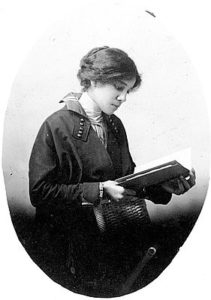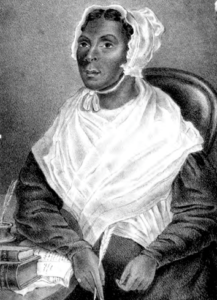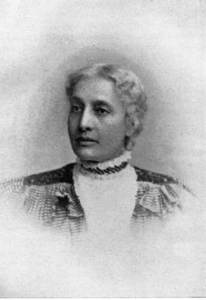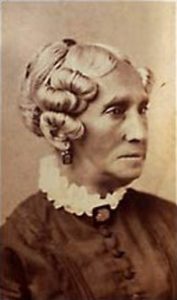Combating Racism – Acknowledging Women’s History Month
Black residents of Montgomery, Alabama, waiting for rides to work during
the bus boycott, protesting racial segregation on the public bus system.
Photo taken in 1956 by Dan Weiner; copyright John Broderick
Many people know the names Rosa Parks, Harriet Tubman, Mary McLeod Bethune, Fannie Lou Hamer, and Sojourner Truth, but many other exceptional Black woman remain unknown. To close Women’s History Month, I want to recognize lesser-known Black women whose efforts expanded the fight for civil rights and whose remarkable accomplishments have made a mark on our collective history.
Just a few of the women I’ve previously written about include:
- Aesha Ash – first Black ballerina in the New York City Ballet, organized the Swans Dream Project to present an alternative view of Black women to young girls;
- Alice August Ball – chemist who discovered the cure for leprocy;
- Daisy Bates – started The Arkansas Weekly newspaper and organized the Little Rock Nine who integrated Central High School in Little Rock;
- Miriam Benjamin – inventor of the Signal chair, the forerunner of signals used to call flight attendants on airplanes and to signal pages in the House of Representatives;
- Claudette Colvin – first to challenge discrimination in the Montgomery Alabama bus system at age 15 (before Rosa Parks);
- Mary Mahoney – first licensed Black nurse in the U.S. and champion of women’s rights;
- Mary Jane Patterson – pioneer in Black education; and
- Madam C. J. Walker – inventor of hair care products.
These additional Black women have been at the forefront of the fight for justice, equality, and fair treatment throughout American history.
AURELIA BROWDER (1919-1971)

Aurelia Browder completed high school in her thirties and eventually earned a bachelor’s degree in science from Alabama State University, where she met Jo Ann Robinson, a fellow Civil Rights activist. Browder was arrested almost eight months before Rosa Parks and one month after the arrest of Claudette Colvin (see my newsletter dated February 14, 2021) for refusing to give up her bus seat to a White rider. She was the lead plaintiff in the case Browder vs. Gayle (William Gayle was Montgomery’s mayor) in which the Supreme Court ruled that segregated buses violated the Fourteenth Amendment and were therefore unconstitutional. While Rosa Parks gained lasting national attention, it was Browder’s court case that resulted in segregation laws being declared unconstitutional, which brought about the desegregation of public buses in the city and ultimately the rest of the nation. Described as “bootstrappy” and “strong willed” Browder continued to be involved with the NAACP, MIA and SCLC after the case was settled.
MARY FAIR BURKS (1914-1991)

Mary Fair Burks was an American educator, scholar and activist during the Civil Rights Movement in Montgomery, Alabama. After earning a Master of Arts degree from Michigan State University in 1934, she returned to Montgomery to teach English at Alabama State Laboratory High School, and later went on to earn her doctorate in education from Columbia University. She subsequently became an English professor at Alabama State College. In 1935, Burks was involved in an incident with a White motorist that led to her arrest by a White officer. The incident demonstrated to Burks the prevalence of racism in Montgomery, which she felt previously shielded from due to her education level and status. In 1946, she founded the Women’s Political Council (WPC) which focused its efforts on promoting civic involvement, increasing voter registration numbers, and lobbying city officials to address racist policies and which helped initiate the Montgomery Bus Boycott in 1955. In 1960, Burks resigned from Alabama State College after several professors were fired for their involvement in civil rights issues.
BEATRICE MORROW CANNADY (1890-1974)

Beatrice Morrow Cannady was a renowned civil rights advocate in Oregon in the early 20th century; she was editor and later publisher of the The Advocate, Oregon’s largest Black newspaper, and co-founder and vice president of the Portland, Oregon chapter of the NAACP. Between 1912 and 1936 she gave hundreds of lectures to high school and college students about the importance of better race relations, and gave lectures to civic and religious groups to share Black culture with White audiences. She used the new medium of radio to share her message of interracial goodwill with listeners in the Pacific Northwest. She was the first Black woman to graduate from law school in Oregon. She tried to mobilize White Portlanders to protest repeated showings of the racism film The Birth of a Nation and when the Ku Klux Klan swept into Oregon in 1921, she urged the governor to act quickly to protect Black Oregonians’ right to live and work without fear.
Called “an ambassador of good will between the racial groups,” she sought to develop allies, making people aware of inequities and how they affect someone’s life, and then take action to create change. As a result of her efforts, White women began hosting interracial teas, and a White history teacher at Portland’s Lincoln High School implemented a unit focused on the “study of the negro” which included reading The Souls of Black Folk by W. E. B. DuBois.
JARENA LEE (1783-1864)

Minister Jarene Lee was the first authorized female preacher in the African Methodist Episcopal (A.M.E.) Church. She was born to a free black family in New Jersey but at the age of seven, was sent to work as a live-in servant for a White family. After moving to Philadelphia as a teenager, and continuing to work as a domestic servant, she attended a worship service at Bethel Church where Bishop Richard Allen, founder of the A.M.E. Church, was preaching. After hearing his powerful sermon, Lee converted to Christianity. In 1807 she confided in Bishop Allen her call to preach. At that time, the A.M.E. Church banned female ministers. In 1819, during a worship service at Bethel Church, the guest preacher struggled with his message and stopped preaching. Lee began preaching, picking up where the minister left off. Bishop Allen was so impressed that he officially gave her authorization to preach the Gospel. Lee began traveling to various cities and was highly praised for her powerful sermons.
HARRIET FORTEN PURVIS (1810-1875)

Harriet Forten Purvis was an abolitionist and first generation suffragist. With her mother and sisters, she formed the first biracial women’s abolitionist group, the Philadelphia Female Anti-Slavery Society. Along with her husband, she ran an Underground Railroad station that assisted about 9,000 runaway slaves along their journey to Canada. She was a leader in the Female Vigilant Society which provided money for transportation and clothing to runaway slaves. In conjunction with the Pennsylvania State Equal Rights League, in 1867 her work led to the desegregation of Philadelphia streetcars. She became involved in the Free Produce Society, whose members boycotted produce grown by and picked by slaves, and she only bought produce and products that were not made or grown by slaves.
JO ANN ROBINSON (1912-1992)

Jo Ann Robinson became a successful educator and famous civil rights activist. After graduating from college in 1934, she became a public school teacher in Macon, Georgia. She went on to earn an M.A. in English from Atlanta University and became an English professor at Alabama State College. After being verbally attacked by a bus driver in 1949, she determined that the city’s racial structure had to change. In 1950, she became president of the Women’s Political Council (WPC), and led the group’s efforts to focus attention on the abuses of White bus drivers toward Black passengers. After Rosa Parks was arrested for refusing to move to the back of the bus on December 1, 1955, Robinson spent the entire night mimeographing more than 50,000 flyers and distributed them to Black city residents asking them to stay off the buses for one day to protest Parks’ arrest. Along with Martin Luther King, Jr. and other leaders, she established the Montgomery Improvement Association (MIA) which planned a longer more extensive boycott to protest racial segregation and discrimination on city buses. Jo Ann Robinson and other WPC members (including Aurelia Browder and Mary Fair Burks) helped sustain the 381-day boycott by providing transportation for Black residents to get to work. The boycott, the first successful protest of segregation in the Deep South, inspired other civil rights demonstrations in the late 1950’s and into the 1960’s.
MARIA MILLER STEWART (1803-1879)

Maria Miller Stewart is one of the foremothers of Black women’s quest for political power and political rights. Orphaned at age 5, she became an indentured servant until she was 15. She taught herself to read and write and married James W. Stewart in 1826. With her marriage, she became part of Boston’s small, free Black middle class and soon became involved with the Massachusetts General Colored Association, which worked for the immediate abolition of slavery. When her husband died in 1829, White executors of his will took her inheritance through legal actions, and left her penniless. In 1831, Boston abolitionist William Lloyd Garrison established his newspaper, The Liberator, and called for Black women to write for it. Steward was the first woman to respond. After publishing her first essay in 1831, Steward launched her public speaking career at a time when women were banned from speaking in public, especially to audiences that included men. Between 1831 and 1835, Garrison published her writings in his newspaper and printed pamphlets with her speeches, essays, and poems which inspired other White and Black abolitionists to become orators.
~ ~ ~ ~ ~ ~ ~ ~ ~ ~ ~ ~ ~ ~ ~ ~ ~ ~ ~ ~ ~ ~ ~ ~ ~ ~ ~ ~ ~ ~
It is time to ensure that Black women, whose names are long-forgotten, are recognized for their courage, sacrifices, and resourcefulness and for the significant impact they had on the success of the civil rights movement and the advancement of equal rights for Black Americans.